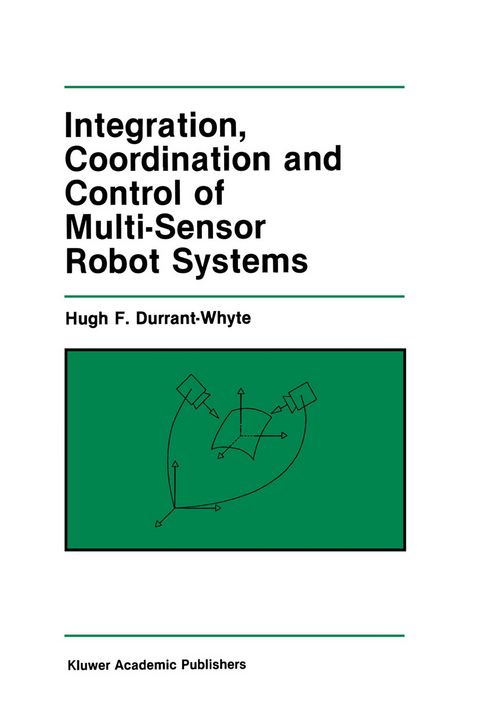
Integration, Coordination and Control of Multi-Sensor Robot Systems
Kluwer Academic Publishers (Verlag)
978-0-89838-247-1 (ISBN)
1 Introduction.- 1.1 Sensors and Intelligent Robotics.- 1.2 Multi-Sensor Robot Systems.- 1.3 Organization of Sensor Systems.- 1.4 The Integration of Sensory Information.- 1.5 Coordination of Sensor Systems.- 1.6 Summary and Overview.- 2 Environment Models and Sensor Integration.- 2.1 Introduction.- 2.2 Geometric Environment Models.- 2.3 Uncertain Geometry.- 2.4 Characterizing Uncertain Geometry.- 2.5 Manipulating Geometric Uncertainty.- 2.6 Gaussian Geometry.- 2.7 Gaussian Topology.- 2.8 Summary.- 3 Sensors and Sensor Models.- 3.1 Introduction.- 3.2 Characterizing Sensors.- 3.3 Multi-Sensor System Models.- 3.4 Sensors as Team Members.- 3.5 Observation Models.- 3.6 Dependency Models.- 3.7 State Models.- 3.8 Summary.- 4 Integrating Sensor Observations.- 4.1 Introduction.- 4.2 Decision Models and Information Fusion.- 4.3 Integrating Observations with Constraints.- 4.4 Estimating Environment Changes.- 4.5 Consistent Integration of Geometric Observations.- 4.6 Summary.- 5 Coordination and Control.- 5.1 Introduction.- 5.2 The Team Decision Problem.- 5.3 Multi-Sensor Teams.- 5.4 Sensor Control.- 5.5 Summary.- 6 Implementation and Results.- 6.1 Introduction.- 6.2 A Structure for Multi-Sensor Systems.- 6.3 Experimental Scope.- 6.4 Implementation.- 6.5 Simulation Results.- 6.6 Experimental Results.- 6.7 Summary and Conclusions.- 7 Conclusions.- 7.1 Summary Discussion.
| Erscheint lt. Verlag | 30.11.1987 |
|---|---|
| Reihe/Serie | The Springer International Series in Engineering and Computer Science ; 36 |
| Zusatzinfo | XX, 236 p. |
| Verlagsort | New York |
| Sprache | englisch |
| Maße | 155 x 235 mm |
| Themenwelt | Informatik ► Grafik / Design ► Digitale Bildverarbeitung |
| Informatik ► Theorie / Studium ► Künstliche Intelligenz / Robotik | |
| Technik ► Elektrotechnik / Energietechnik | |
| ISBN-10 | 0-89838-247-5 / 0898382475 |
| ISBN-13 | 978-0-89838-247-1 / 9780898382471 |
| Zustand | Neuware |
| Haben Sie eine Frage zum Produkt? |
aus dem Bereich


